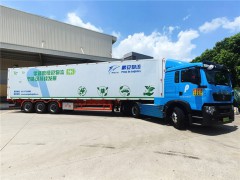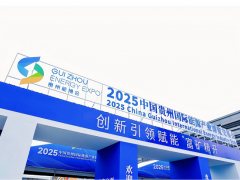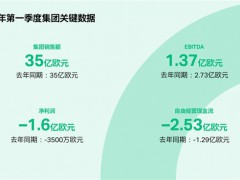據7月12日Trade Arabia消息:西門子已在德國Wunsiedel舉行正式的奠基儀式,標志著該國最大綠色制氫廠之一的開工建設,該工廠的裝機容量為8.75兆瓦。
該設施將僅使用太陽能或風能等可再生能源,每年生產多達1350噸的氫氣。將產生的氫氣用于交通和工業,每年可減少13500二氧化碳。
西門子智能基礎設施是整個工廠的總承包商,西門子金融服務公司(SFS)參與了股權融資,并持有運營公司WUN H2 45%的股份。電解槽將由西門子能源公司提供。
德國經濟部長Hubert Aiwanger說:“WUN H2項目是對實施巴伐利亞氫戰略的重要貢獻。‘巴伐利亞制造’的綠色氫展示了國內技術專長,并通過本地價值創造提高了接受度。”
環境事務部長Thorsten Glauber補充道:“氫是實現氣候中和未來道路上的一項關鍵技術。能源轉型只有在有許多創新方法的情況下才會成功,就像Wunsiedel所追求的那樣。”
根據經合組織最近的一項分析,到2050年,全球能源需求預計將增長80%。在應對氣候變化挑戰的同時滿足這一需求將需要在清潔能源發電、配電和數字化方面進行大規模投資。為此,包括交通和工業在內的所有高耗能部門都必須大力推進脫碳工作。
該工廠將建在Wunsiedel能源園區,并與現有的西門子電池儲存設施和鄰近的工業企業相連。它們可以利用廢熱,或者電解過程中分離出來的氧氣。這種聯網的基礎設施將成為整個德國的典范。
“將我們的能源供應轉換為新的、氣候中和的能源是能源轉型的主要目標之一。氫在其中發揮著關鍵作用,”西門子首席財務官Ralf P. Thomas教授在奠基儀式上說。“在這方面,Wunsiedel通過其現有的分布式能源系統和數字技術的使用,是可持續能源未來的燈塔項目。”
對于西門子來說,數字化和可持續性正日益成為業務活動的焦點。在一次面向投資者的活動中,西門子提出了其新的“學位”框架,以實現對環境、社會和治理問題的可持續承諾。
新的制氫廠計劃在2022年夏季投產。
馮娟 摘譯自 Trade Arabia
原文如下:
Siemens kicks off work on giant green hydrogen plant
Siemens has held the official groundbreaking ceremony in Wunsiedel, Germany marking the start of construction of one of the largest green hydrogen plants in the country with a capacity of 8.75 megawatts (MW).
The facility will produce up to 1,350 tons of hydrogen per year using only renewable energy, for example from solar or wind power. Using the generated hydrogen in transportation and industry allows for CO2 savings of up to 13,500 annually.
Siemens Smart Infrastructure is the general contractor for the entire plant, with Siemens Financial Services (SFS) participating in the equity financing as well as holding a share of 45 percent in the operating company WUN H2 GmbH. The electrolyzer will be supplied by Siemens Energy
German Minister of Economic Affairs Hubert Aiwanger said: “The WUN H2 project is an important contribution to implementing Bavaria’s hydrogen strategy. Green hydrogen ‘Made in Bavaria’ demonstrates domestic technological expertise and increases acceptance through local value creation.”
Minister of Environmental Affairs Thorsten Glauber added: “Hydrogen is a key technology on the road to a climate-neutral future. The energy transition will only succeed if there are many innovative approaches like the one pursued in Wunsiedel.”
According to a recent analysis by the OECD, global energy demand is estimated to increase by 80 percent by 2050. Meeting this demand while addressing the challenges of climate change will require massive investments in clean energy generation, power distribution, and digitalization. To this end, all energy-consuming sectors, including transportation and industry, must push ahead with their decarbonization efforts.
The plant will be constructed at Wunsiedel Energy Park and connected to the existing Siemens battery storage facility and adjacent industrial enterprises. These can use waste heat, or the oxygen split off during electrolysis. This connected infrastructure will serve as a model for the whole of Germany.
“Converting our energy supply to new, climate-neutral energy sources is one of the main objectives of the energy transition. Hydrogen plays a key role in this,” said Siemens CFO Professor Dr. Ralf P. Thomas at the groundbreaking ceremony. “In this respect, Wunsiedel, with its existing distributed energy system and the use of digital technology, is a lighthouse project for a sustainable energy future.”
For Siemens, digitalization and sustainability are increasingly becoming the focus of business activities. At an event for investors, Siemens had presented its new “Degree” framework for sustainable commitment to environmental, social and governance issues.
The new hydrogen production plant is scheduled to go into operation in the summer of 2022.
免責聲明:本網轉載自其它媒體的文章,目的在于弘揚石化精神,傳遞更多石化信息,并不代表本網贊同其觀點和對其真實性負責,在此我們謹向原作者和原媒體致以敬意。如果您認為本站文章侵犯了您的版權,請與我們聯系,我們將第一時間刪除。







